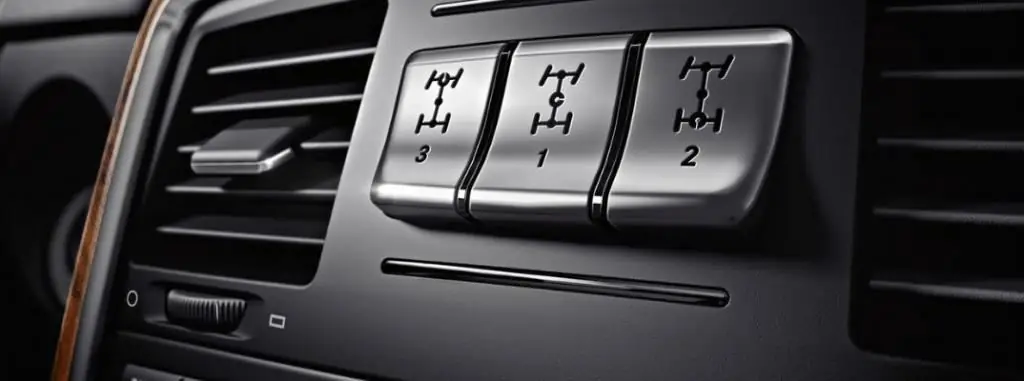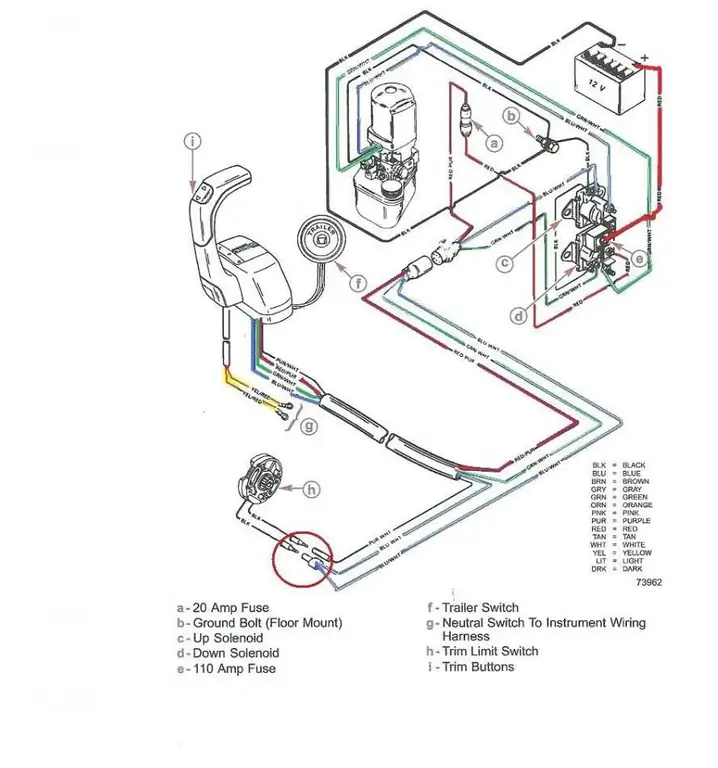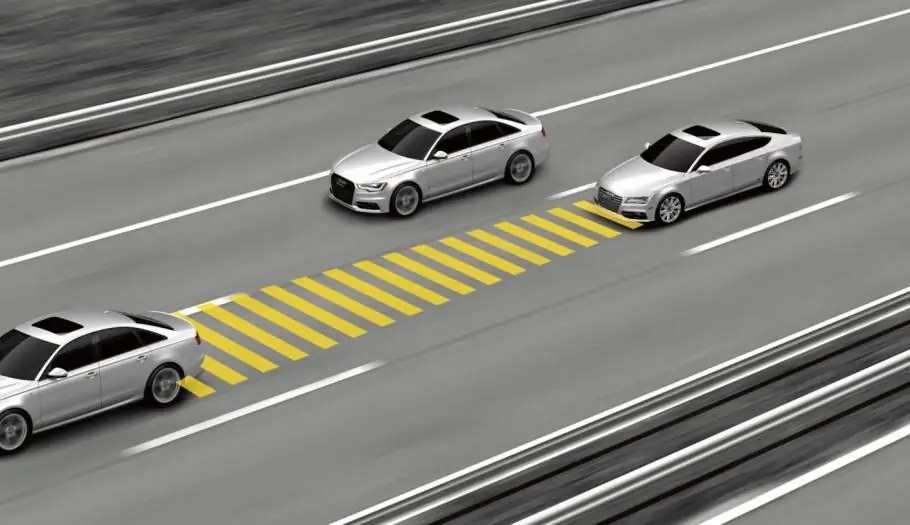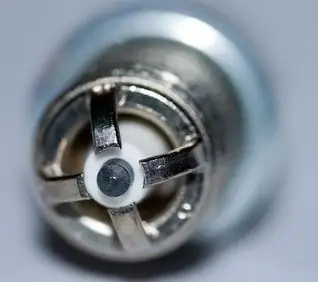2026 Author: Erin Ralphs | [email protected]. Last modified: 2025-01-22 21:14:12
CDI ignition is a special electronic system that has been nicknamed capacitor ignition. Since the thyristor performs the switching functions in the node, such a system is also often called a thyristor system.
History of Creation
The principle of operation of this system is based on the use of a capacitor discharge. Unlike the contact system, the CDI ignition does not use the interruption principle. Despite this, contact electronics has a capacitor, the main task of which is to eliminate interference and increase the intensity of spark formation on the contacts.
Individual elements of the CDI ignition system are designed to store electricity. For the first time such devices were created more than fifty years ago. In the 70s, rotary piston engines began to be equipped with powerful capacitors and installed on vehicles. This type of ignition is in many ways similar to energy storage systems, but it also has its own characteristics.

How does CDI ignition work?
The principle of operation of the system is based on the use of direct current, unable to overcome the primary winding of the coil. A charged capacitor is connected to the coil, in which all the direct current accumulates. In most cases, in suchelectronic circuit is quite high voltage, reaching several hundred volts.
Design
Electronic ignition CDI consists of various parts, among which there is always a voltage converter, the action of which is aimed at charging storage capacitors, the storage capacitors themselves, an electric switch and a coil. Both transistors and thyristors can be used as an electric switch.

Disadvantages of the capacitor discharge ignition system
CDI ignition installed on cars and scooters has several drawbacks. For example, the creators have overcomplicated its design. The second minus can be called a short impulse level.
Advantages of the CDI system
Condenser ignition has its own advantages, including a steep front of high-voltage pulses. This characteristic is especially important in cases where CDI ignition is being installed on IZH and other brands of domestic motorcycles. Spark plugs of such vehicles are often flooded with a large amount of fuel due to incorrectly tuned carburetors.
Thyristor ignition does not require the use of additional sources that generate current. Such sources, such as a battery, are only required to start a motorcycle using a kick starter or an electric starter.
The CDI ignition system is very popular and is often installed on scooters, chainsaws and motorcycles of foreign brands. For the domestic motor industry, it was almost never used. Despite this, you can find CDI ignition on Java, GAZ and ZIL cars.

The principle of electronic ignition
Diagnosis of the CDI ignition system is very simple, as is the principle of its operation. It consists of several main parts:
- Rectifier diode.
- Charging Capacitor.
- Ignition coil.
- Commuting thyristor.
System layout may vary. The principle of operation is based on charging a capacitor through a rectifier diode and then discharging it to a step-up transformer using a thyristor. At the output of the transformer, a voltage of several kilovolts is generated, which leads to the fact that between the electrodes of the spark plug pierces the air space.
The whole mechanism mounted on the engine is somewhat more difficult to make function in practice. The twin-coil CDI ignition design is a classic design that was first used on the Babette mopeds. One of the coils - low voltage - is responsible for controlling the thyristor, the second, high voltage, is charging. Using one wire, both coils are connected to ground. The output of the charging coil is connected to input 1, and the output of the thyristor sensor is connected to input 2. Spark plugs are connected to output 3.
Spark is supplied by modern systems when it reaches about 80 volts at input 1, while the optimal voltage is considered to be 250 volts.

Varieties of the CDI scheme
Hall sensor, coil or optocoupler can be used as thyristor ignition sensors. For example, Suzuki scooters use a CDI circuit with a minimum number of elements: the thyristor is opened in it by the second half-wave of voltage taken from the charging coil, while the first half-wave charges the capacitor through the diode.
Engine-mounted breaker ignition does not come with a coil that can be used as a charger. In most cases, step-up transformers are installed on such motors, which raise the voltage of the low-voltage coil to the required level.
Model aircraft engines are not equipped with a magnet-rotor, since maximum savings in both dimensions and weight of the unit are required. Often a small magnet is attached to the motor shaft, next to which a Hall sensor is placed. A voltage converter that steps up a 3-9V battery to 250V charges the capacitor.
Removing both half-waves from the coil is possible only when using a diode bridge instead of a diode. Accordingly, this will increase the capacitance of the capacitor, which will lead to an increase in the spark.

Setting the ignition timing
Ignition adjustment is carried out in order to obtain a spark at a certain point in time. In the case of fixed stator coils, the magnet-rotor rotates to the required position relative to the crankshaft trunnion. Keyways are sawn in those schemes wherethe rotor is attached to the key.
In systems with sensors, their position is corrected.
The ignition timing is given in the engine data sheet. The most accurate way to determine the UOS is to use a car strobe. Sparking occurs in a certain position of the rotor, which is marked on the stator and rotor. A wire with a clamp from the included stroboscope is attached to the high-voltage wire of the ignition coil. After that, the engine starts, and the marks are highlighted with a strobe. The position of the sensor changes until all marks match each other.

System malfunctions
CDI ignition coils rarely fail, despite popular belief. The main problems are associated with the burning of the windings, damage to the case, or internal wire breaks and short circuits.
The only way to disable the coil is to start the engine without connecting the ground to it. In this case, the starting current passes to the starter through the coil, which fails and bursts.
Ignition system diagnostics
Checking the he alth of the CDI system is a fairly simple procedure that every car or motorcycle owner can handle. The entire diagnostic procedure consists of measuring the voltage supplied to the power coil, checking the ground connected to the motor, coil and switch, and checking the integrity of the wiring that supplies current to the consumers of the system.
The appearance of a spark on the engine plug directly depends on whether thecoil with switch powered or not. No electrical consumer can work without proper power. Depending on the result, the check either continues or ends.

Results
- No spark with coil energized requires check of high voltage circuit and ground.
- If the high-voltage circuit and ground are fully functional, then the problem is most likely with the coil itself.
- If there is no voltage at the coil terminals, it is measured at the switch.
- If there is voltage at the terminals of the switch and its absence at the terminals of the coil, the reason is most likely that there is no mass on the coil or the wire connecting the coil and the switch is broken - the break must be found and eliminated.
- Lack of voltage on the switch indicates a malfunction of the generator, the switch itself or the induction sensor of the generator.
The method for checking the CDI ignition coil can be applied not only to motor vehicles, but also to any other vehicles. The diagnostic process is simple and consists of a step-by-step check of all the details of the ignition system with the determination of the specific causes of the malfunctions. Finding them is quite simple if you have the necessary knowledge about the structure and principle of operation of the CDI ignition.
Recommended:
Center differential lock: what it is, how it works

Off-road cars are equipped with a differential. This element is needed to provide the drive wheels with different angular speeds. When turning, the wheels are located on the outer and inner radius. The center differential on the SUV has a lock. Not everyone knows what it is - a locking center differential. Let's see what it is, why and how to use it
Alpha moped wiring: how it works and what it connects to

It is the wiring that has a lot of breakdown options and makes the owners of Chinese mopeds spend a lot of nerves trying to fix it. As a result, the wiring of the Alpha moped very soon begins to look like a bird's nest, and one cannot do without a diagram. How to deal with tangled wires?
Cruise control: how it works, how to use

Cruise control is a software and hardware complex designed to maintain the speed of movement in a certain area. In this case, the participation of the driver is not required - you can relax on a long journey
Ignition module as an element of the ignition system

The ignition system is a set of elements that, during synchronous operation, provide ignition of the air-fuel mixture. One of the very important elements of the ignition system is the ignition module
"Lada-Kalina": ignition switch. Device, principle of operation, installation rules, ignition system, advantages, disadvantages and features of operation

Detailed story about the ignition switch Lada Kalina. General information and some technical characteristics are given. The device of the lock and the most frequent malfunctions are considered. The procedure for replacing with your own hands is described

